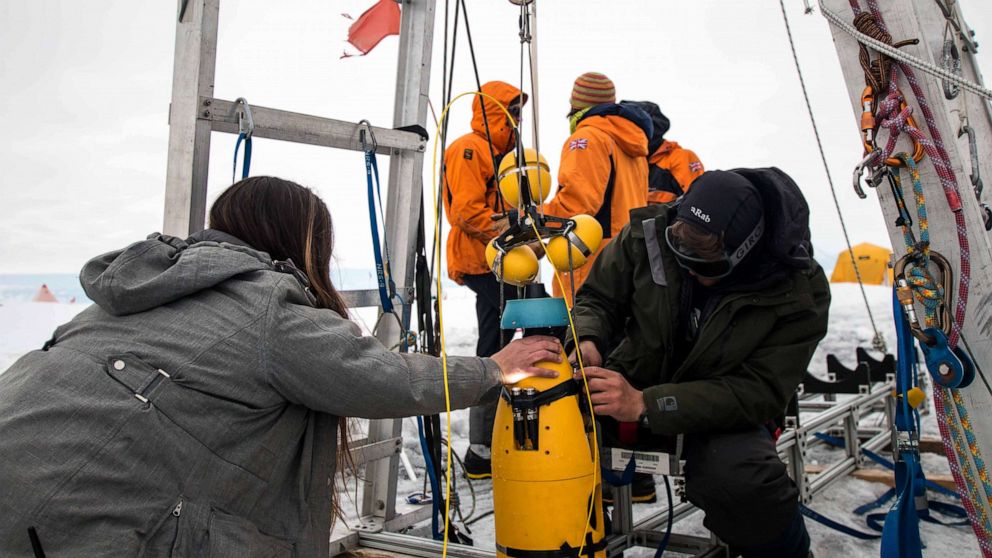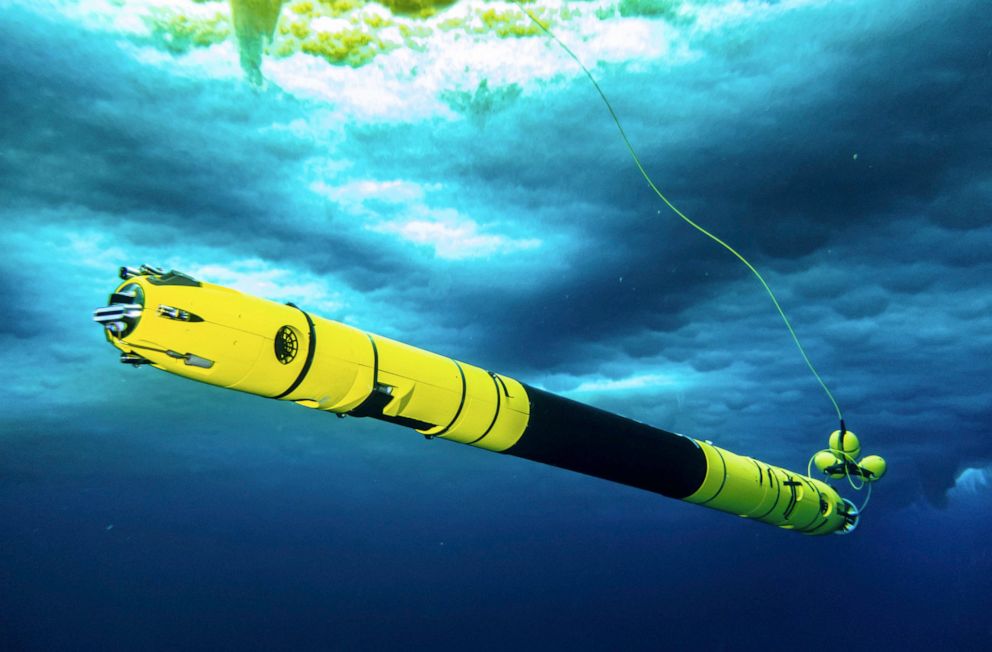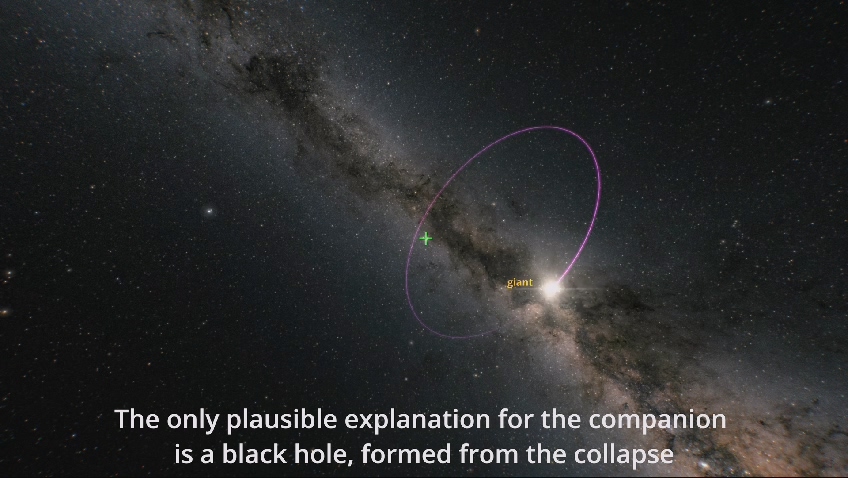Science
First ever images of Antarctica’s ‘Doomsday glacier’ show melting from below


|
|
Scientists studying one of the most crucial glaciers that’s been deteriorating by climate change got a new look at what’s going on underneath the surface.
In two studies published in the science journal “Nature,” scientists from the UK-US International Thwaites Glacier Collaboration said they were able to measure the bottom of the Thwaites Glacier and insert cameras and probes through a borehole to study the object from underwater.
The images showed researchers that while the glacier overall is melting slower than models projected, the warmer water underneath the ice is creating cracks and crevasses where the ice is melting much faster than the rest of the glacier.
Thwaites Glacier is seen in this undated photo.
NASA
The glacier, nicknamed the “Doomsday glacier” which is roughly the size of Florida, has been sensitive to climate change over the last 30 years and accounts for about 4% of global sea level rise, according to scientists. If the glacier collapses it could add 25 inches to the global sea level rise in the coming centuries, according to researchers.
Britney Schmidt, who’s an Associate Professor at Cornell University and lead author of one of the studies told ABC News that the initial data that was collected changes scientists’ understanding baseline conditions of what is happening with the glacier.
“Now we know that this collapse has happened under less melting than we thought and it means it can be easier to collapse,” she said.
Scientists undertook observations of the grounding line, where the ice first meets the ocean, beneath the Thwaites Eastern Ice Shelf to understand how the ice and ocean interact.
Peter Davis, an oceanographer with the British Antarctic Survey who was the lead author on one of the studies, took ocean measurements through a 600-meter deep borehole around two kilometers from the grounding line, created by a hot water drill in late 2019. These measurements were compared with melt rate observations taken at five other sites underneath the ice shelf.


Scientists work in the field at the Thwaites Glacier in Antarctica.
Becka Bower/Cornell University
Over nine months, the ocean near the grounding line became warmer and saltier but the melt rate at the ice base averaged two to five meters per year, which were less than previously modeled, researchers said.
Davis said in a statement that the results were surprising but still not good news for the state of the glacier.
“If an ice shelf and a glacier are in balance, the ice coming off the continent will match the amount of ice being lost through melting and iceberg calving. What we have found is that despite small amounts of melting there is still rapid glacier retreat, so it seems that it doesn’t take a lot to push the glacier out of balance,” he said in a statement.


An Icefin is seen in the water as scientists work in the field at the Thwaites Glacier in Antarctica.
Becka Bower/Cornell University
Schmidt’s team of researchers used a robot called Icefin to go underwater and into the glacier through a 600-meter deep borehole created in 2019 by a research drill. The robot was able to get photos, video and other data from both the ocean floor and the underside of the glacier as it moved, according to the researchers.
“We never had this data before so we had our best guess,” Schmidt said. “We now have the measurements we need to fine-tune our models.”
Schmidt said researchers will continue to take data from the glacier and get a better sense of how bad the climate change damage will be.
“We need those details to inspire our response as people for the change we’ve signed up for,” she said.





Science
Nasa confirms metal chunk that crashed into Florida home was space junk


|
|
A heavy chunk of metal that crashed through the roof of a Florida home is, in fact, space junk, Nasa has confirmed.
The federal space agency said that a cylinder slab that tore through a house in Naples, Florida, last month was debris from a cargo pallet released from the international space station in 2021, according to a Nasa blogpost.
The determination was made after the agency collected the debris from the Florida home and analyzed it at the Kennedy Space Center.
“Based on the examination, the agency determined the debris to be a stanchion from the Nasa flight support equipment used to mount the batteries on the cargo pallet,” the agency said.
The pallet, which contained ageing nickel hydride batteries, was released after new lithium-ion batteries were installed in the space station.
The debris was supposed to be destroyed in the Earth’s atmosphere. Instead, a piece of metal crashed through a Florida home, NBC News reported.
The debris weighs 1.6lb and measures about 4in by 1.6in.
Homeowner Alejandro Otero described the experience to WINK News, which first reported the story.
“It was a tremendous sound. It almost hit my son. He was two rooms over and heard it all,” Otero said to WINK.
“Something ripped through the house and then made a big hole on the floor and on the ceiling.”
The scientific journal Ars Technica previously speculated that the metal was probably space station debris. Nasa finally confirmed the origin of the chunk on Monday.
The space agency added that it would investigate how the debris managed to survive its re-entry into Earth’s atmosphere and “update modeling and analysis”.
It is unclear if Nasa will cover the cost of damages to Otero’s home.
In comments posted to X shortly after the incident, Otero said that Nasa had not responded to messages he left with the agency.





Science
Federal government announces creation of National Space Council – CBC News


Canada’s space sector received a boost from the federal government in its budget, both in terms of money and vision.
The 2024 budget included a proposal for $8.6 million in 2024-25 to the Canadian Space Agency (CSA) for the Lunar Exploration Accelerator Program (LEAP), which invests in technologies for humanity’s return to the moon and beyond.
In addition to the funding, the federal government also announced the creation of a National Space Council, which will be “a new whole-of-government approach to space exploration, technology development, and research.”
For Space Canada, an organization comprised of roughly 80 space sector companies including some of Canada’s largest, such as Magellan Aerospace, Maritime Launch and MDA, it was a welcome announcement.
“We’ve been advocating for it since the inception of our organization, and we were really very happy, and we applaud the federal government’s commitment announced in the budget,” said Brian Gallant, CEO of Space Canada.
Gallant said that investment in space is an investment in Canada.
“Two-thirds of space sector jobs are STEM jobs. These are good paying solid jobs for Canadians. And on top of that, we have approximately $2.8 billion that is injected into the Canadian economy because of the space sector,” he said.
The U.S. formed its National Space Council in 1989, but it was disbanded in 1992 and reestablished in 2017.
In the 2023 budget, the government announced proposed spending of $1.2 billion over 13 years, that was to begin in 2024-25, to the CSA’s contribution of a lunar utility vehicle that would assist astronauts on the moon. The as–yet–developed vehicle could help astronauts move cargo from landing sites to habitats, perform science investigations or support them during spacewalks on the surface of the moon.
It also proposed to invest $150 million over five years for the LEAP program.
MDA, the company behind Canadarm, was also pleased with the announcement.
“Canada has an enviable global competitive advantage in space and the creation of a National Space Council is critical to Canada maintaining that leadership position,” CEO Mike Greenley said in an email to CBC News.
“Space is now a rapidly growing, highly strategic and competitive domain, and there is a real and urgent need to recognize its importance to the lives of Canadians and to our economy and national security.”
The next project for MDA is Canadarm3, which will be part of Lunar Gateway, a international space station that will orbit the moon. It will serve as a sort of jumping-off point for astronauts heading to the moon and eventually beyond.
“The Lunar Gateway is a great opportunity for Canada and for MDA Space to not only provide the next generation of Canadarm robotics but to clearly plant our flag as a core national and industry participant in the Artemis era,” Greenley said.
Lunar Gateway is set to begin construction no earlier than 2025, according to NASA.
Science
Astronomers discover Milky Way's heaviest known black hole – Xinhua


JERUSALEM, April 16 (Xinhua) — Astronomers have found BH3 is by far the heaviest known stellar black hole in the Milky Way galaxy, 33 times the mass of the Sun.
An international research team found the black hole when looking into the latest data group recorded in the European Space Agency’s Gaia space telescope, Israel’s Tel Aviv University (TAU) said in a statement on Tuesday.
The black hole is located 1,500 light-years away from Earth, said TAU, whose researchers participated in the study of the newly discovered binary system.
In binary systems, a visible star can be found orbiting a massive but unseen companion, indicating the latter is a black hole.
Binaries have revealed around 50 suspected or confirmed stellar-mass black holes in the Milky Way, but scientists think there may be as many as 100 million in our galaxy alone, according to NASA.
Stellar-mass black holes are formed when a star runs out of its nuclear combustion fuel and collapses.
The massive black hole BH3 was detailed in the open-access journal Astronomy & Astrophysics for further study.


-



 Sports16 hours ago
Sports16 hours agoTeam Canada’s Olympics looks designed by Lululemon
-
Tech24 hours ago
Motorola's Edge 50 Phone Line Has Moto AI, 125-Watt Charging – CNET
-



 Politics21 hours ago
Politics21 hours agoPolitical interference in Canada’s pension funds is wrong
-
Business15 hours ago
Firefighters battle wildfire near Edson, Alta., after natural gas line rupture – CBC.ca
-



 Sports21 hours ago
Sports21 hours ago‘BOTTCHER BOMBSHELL:’ Alberta curling foursome set to move forward without skip
-
News21 hours ago
Freeland tables her fourth federal budget — this time with a tight focus on housing
-
News17 hours ago
Richard Chevolleau Short Film “Marvelous Marvin” Set to go to Camera
-



 Investment18 hours ago
Investment18 hours agoStephen Poloz will lead push to boost domestic investment by Canadian pension funds




